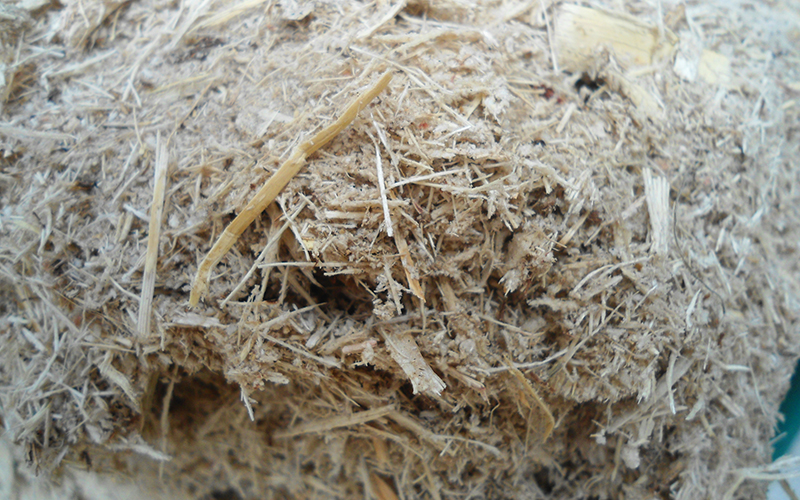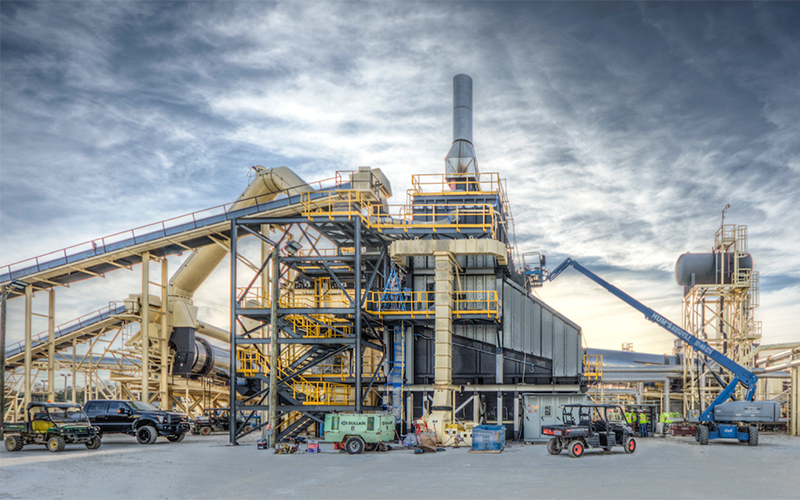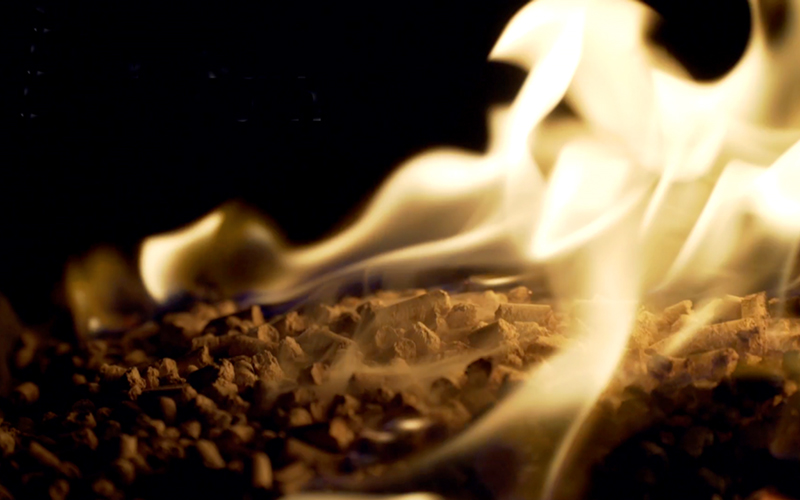
This is where you find all our press releases and news articles.
What is Sugarcane Bagasse?
Bagassse is a tree-free, renewable resource made from sugarcane fiber left after juice is extracted.
A typical chemical analysis on a washed and dried dasis of bagasse might be:
Cellulose 45–55%
Hemicellulose 20–25%
Lignin 18–24%
Ash 1–4%
Waxes <1%

Sugarcane Bagasse
Why Use Sugarcane Bagasse Pellets?
There are a lot of sugar factories in southeast Asia, plenty of sugarcane are produced after being extracted. For each 10 tonnes of sugarcane crushed, a sugar factory produces nearly 3 tonnes of wet bagasse. Most of the factories have no idea with how to deal with the material, massive waste materials take space of the plant. Few factories burn the bagasse fiber as fuel, when burned in quantity, it produces sufficient heat energy to supply all the needs of a typical sugar factory. The rest of the bagasse can be processed to biomass pellets and exported to other countries as fuel, which bring the factory economic benefits.
Sugarcane is a tree-free renewable resource, which makes it superior to other kind of fuels. Sugarcane bagasse pellets are with high calorific value of 3400 to 4200 kilocalorie and low ash. It’s a wise choice as fuel energy.
Chemical contents of bagasse
| Cellulose | Hemicellulose | Lignin | Ash | Waxes |
| 45 – 55% | 20 – 25% | 18 – 24% | 1 – 4% | <1% |
Despite of the chemical content, there are also other advantages for choosing bagasse (pith) as a raw material for pellet. First, there is an abundant quantity of bagasse wastes in the world. Sugarcane is a popular economic crop used to produce sugar. For each sugar manufacturer, there are millions of tons of bagasse has been left during the sugar production process. It is an existing source for large scale bagasse pellet production line. Secondly, bagasse materials have a high energy content and better burn quality. Sugarcane bagasse has been used as a primary fuel in sugar mills for such a long time. The CO2 emission is less than the CO2 the sugarcane absorbed during its growing phrase. Moreover, bagasse is an agricultural waste that we have to do some further processes to avoid its bad influence to the food chain. In other words, if we left the bagasse to rot on the field, it will release greenhouse gases. So with the pellet machine, we are not just makes the bagasse material became commercial fuel product, but also helped to protect the environment.
Production Process of Bagasse Pellets

Production Process of Bagasse Pellets
Drying process:
unlike the wood shavings, bagasse has a high moisture content, about 40% – 50%, it is too high for pelletizing process, therefore, the pellet rotary dryer is a necessary equipment in bagasse pellet plant.
Sieving process:
during the sugarcane extraction process and the transportation of bagasse, it is easy for the bagasse to be mixed with contaminants, such as metal particles, stones. So in bagasse pellet plants, sieving is a necessary process for all kinds of pelletizing materials.
Grinding process:
bagasse material has a smaller size and lower rigidity compare to the wood materials. But as we all know, the material size must be under 5mm before the pelletizing process. So we must use the hammer mill to grind the bagasse into required particles before pelletizing.
Pelletizing process:
ring die pellet mill is the core equipment in pellet plants. It is the machine which mould the materials into regular pellet products. After the former pretreatment processes, the bagasse materials can be feed into the ring die pellet mill directly. Normally, each ring die bagasse pellet mill can produce 2-3 tons bagasse pellet per hour. If you need a larger capacity of your bagasse pellet plant, it must need to connect several ring die pellet mills together.
Cooling process:
the cooling process is also a necessary process for all kinds of pellet plants. After the pelletizing process, the bagasse materials has been molded into regular bagasse pellet, but with such a high temperature. Which means, it is very easy to be deformed. Use the pellet cooler can help reduce the bagasse pellet temperature and regain its rigidity.
Packing process:
No matter you bagasse pellet is for local residential heating purpose or industrial power generation, the bagasse pellet has to have a proper package. Gemco offers two types of packing machine for bagasse pellet plants, the bulk packing system and the commercial bag packing system.
Which Areas Are Suitable for Building Bagasse Pellet Plant
Although, there are abundant quantity of bagasse waste in the world, that doesn't mean that we can invest a bagasse (pith) pellet plant at any place we want. Sugarcane is a tropical and subtropical plant, therefore, the majority of sugar mills located at the sugarcane country of origin or at least nearby the sugarcane source. This is a traditional way to cut the transportation cost of the raw materials. So, for bagasse pellet plant investors, to establish the plant site nearby the sugar mills or sugarcane juice processing plant in the origin countries, is an efficient way to reduce the transportation fee of the bagasse material.

Bagasse Pellet Plant
Brazil is the largest sugarcane producer in the world. Every year, the Brazilian sugarcane industry makes billions of money by making sweeteners, ethanol, alcohols by sugarcane. Therefore, even though the sugar mills burns the bagasse wastes for heating and electricity purpose, there are still millions of tons of bagasse wastes left in Brazil. But right now, pellet fuel is not so popular in Brazil, the majority of people in Brazil doesn’t realize the financial potential of making bagasse wastes into pellets. EU has a strong pellet demand, Brazil has abundant bagasse material source, which makes Brazil the perfect bagasse pellet manufacturers and exporter in the world. Moreover, we have to know that, with the global environment concern, biomass pellets will become a hot substitute of fossil fuel worldwide sooner or later. Right now, the Brazil bagasse pellet plants hasn’t taken shape, but some top pellet plant companies have set up their Brazil bagasse pellet plant business plans already.
Despite of Brazil, there are also some other large sugarcane origins in the world which can also explore bagasse pellet plants. The potential bagasse pellet plant origins are: India, Hainan Province in China, Cuba, Thailand, Mexico, Australia, America, Indonesia, South Africa, etc.
Bagasse Pellets Applications
As a Fuel Source
Because bagasse pellets are created from sugar production, they are mainly used as fuel sources for sugar factories. When large quantities of bagasse are burned, an excess of energy in the form of heat is released. This can often power an entire sugar mill. Since such a large amount of energy is created through combustion, excess energy can be sold onto the consumer electrical grid to create electricity.
Some sugar mill owners sell their excess bagasse pellets to other factories with boilers or export them to foreign countries. Recently many East Asian countries such as China have started imported large quantities of bagasse pellets. An average size power plant usually consumes over 10,000 tonnes of bagasse pellets every month.

Bagasse Pellets As a Fuel Source
As Animal Feed
Another way to use bagasse pellets is to feed them to your livestock. To use bagasse as feed it must be processed further by fermenting it. In this step of the process, enzymes and molasses are added to the pellets. Many countries market their pellets as 'fiber rich'.
As Pulp and Paper
In countries such as India, China, Colombia, Iran, Thailand and Argentina, bagasse is used in lieu of wood to create paper and pulp. Bagasse has good qualities for creating paper for mass production and distribution. It is also used to create thicker material boxes and boards as a substitute for plywood. Many companies even use it to build furniture.
Having the right mix of reliable, high-quality pellet machine and pelletizing systems and expert support is essential to your success. Watch how our end-to-end feed pellet plant solutions have helped our customers optimize their performance.
Our customized and future-proofed turnkey pellet plant solutions is designed with you at the core. From vision to reality and beyond, our team stays connected with yours. Giving you peace-of-mind with an expert at your side.

At RICHI, we go beyond project completion. With RICHI Servicee, we’re your dedicated partners in success. Count on us for expert guidance, minimal downtime, and optimized productivity. Choose RICHI for unmatched service and support.



Meet global product demands and quality standards with industry-leading pellet plant design, engineering, equipment, and construction services for pellet processors.


Your Partner Beyond Project Completion
2000+ cases
RICHI is the leading designer, manufacturer and builder of pellet plants in the world, completing over 2000 projects in 140 countries across 6 continents.
Read More
Increase plant productivity, profitability, and safety by integrating high quality equipment into your pellet production line. Over the years, RICHI has become China's top pellet equipment manufacturer. At the same time, RICHI has established valuable partnerships with the world's leading component and raw material manufacturers to bring you the best there is in technology, automation, and efficiency in pelleting plant machinery.

For nearly 30 years, RICHI has been providing best-in-class pellet plant equipment and services to clients across a variety of industries, sizes, and needs. We pride ourselves on the knowledge and skill that each team member possesses – from our technical sales team to our process design engineers. You can count on RICHI Machinery to take your operation to the next level of innovation, quality, and success.
Need help with your pellet manufacturing plant project? Contact us today.
ANIMAL FEED
BIOMASS
WOOD
ORGANIC FERTILIZER
AQUA FEED
CAT LITTER
MUNICIPAL WASTE RECYCLING
SPECIAL PELLET PRODUCTION
RICHI Machinery continues to deliver world class pellet mill equipment, pellet plant engineering and project solutions that add value to our customers in the animal feed, wood waste, agriculture waste, organic fertilizer, cat litter and special pellet products industries. Throughout the years, we RICHI Machinery have built strong brand, becoming industry-leading pellet machine manufacturer. We value integrity, promise quality, and prioritize your success.
Learn MoreWith our expert team, we precisely implement your process engineering requirements in pellet mill and pelletizing plant systems. No matter which industry you’re in – we understand your needs and deliver solutions that meet the highest standards.
At RICHI, quality comes first. Our pellet making machine and related pellet line equipment undergo rigorous quality controls to ensure they meet the highest standards. Rely on products that are durable, safe, and efficient.
With decades of experience in pellet machine and pellet production line production, we have earned a reputation as a trusted partner in various industries. Our expertise allows us to cover a wide range of applications.
Not only do we offer premium pelleting equipment, but we are also experts at designing, building, installing, and maintaining facilities from the ground up. Our expertise is within pellt plant process design, discovering the most efficient, productive, and profitable way to handle your materials in an end-to-end cycle.

Keeping in touch with us is an effective way to solve all your problems. If you have any needs or questions, please leave your contact information, then RICHI technical consultants will send design, quotation, videos to your mailbox. You can also contact us directly via WhatsApp: +86 13838389622
Copyright©2015-2024 by HENAN RICHI MACHINERY CO., LTD. All rights reserved.